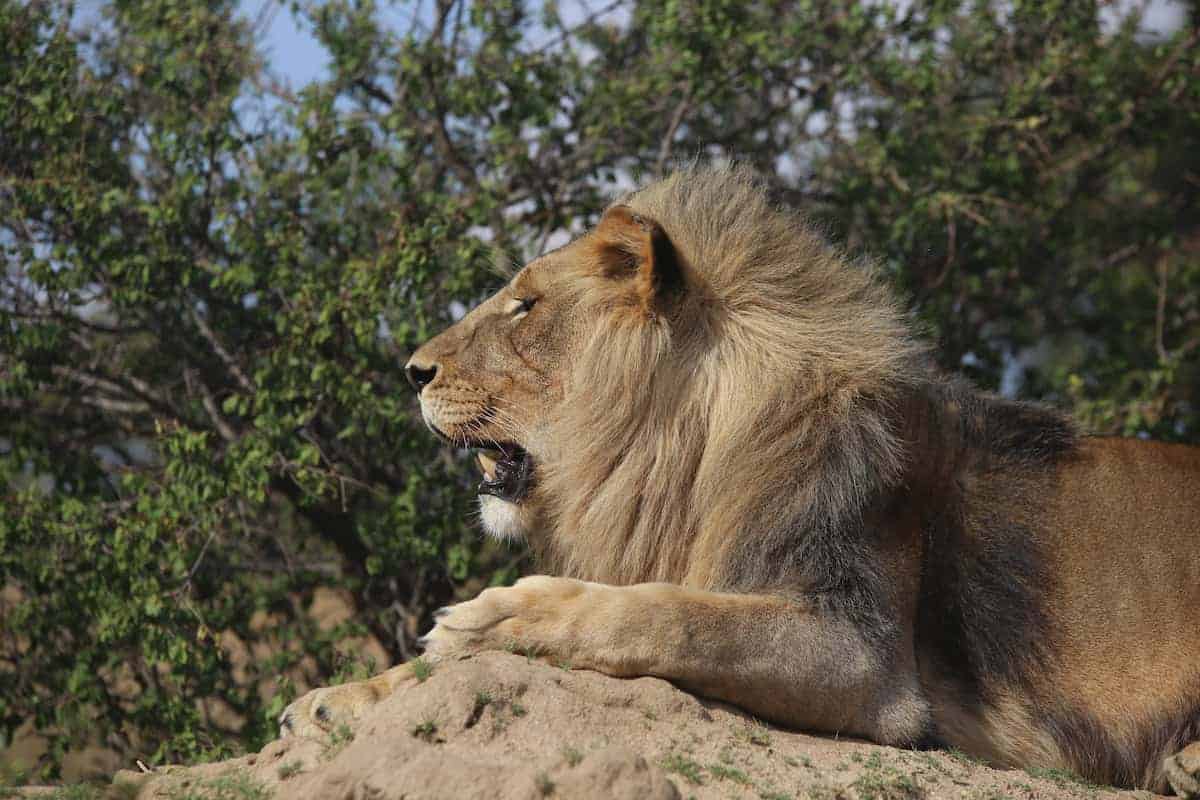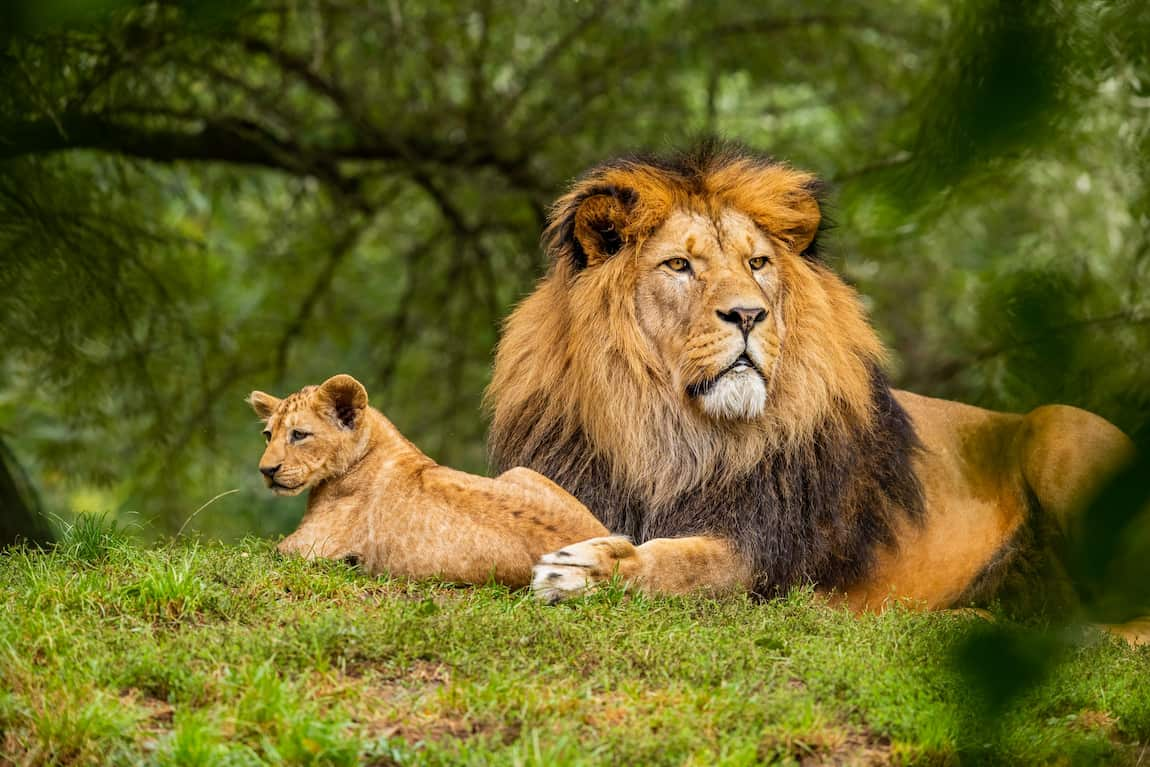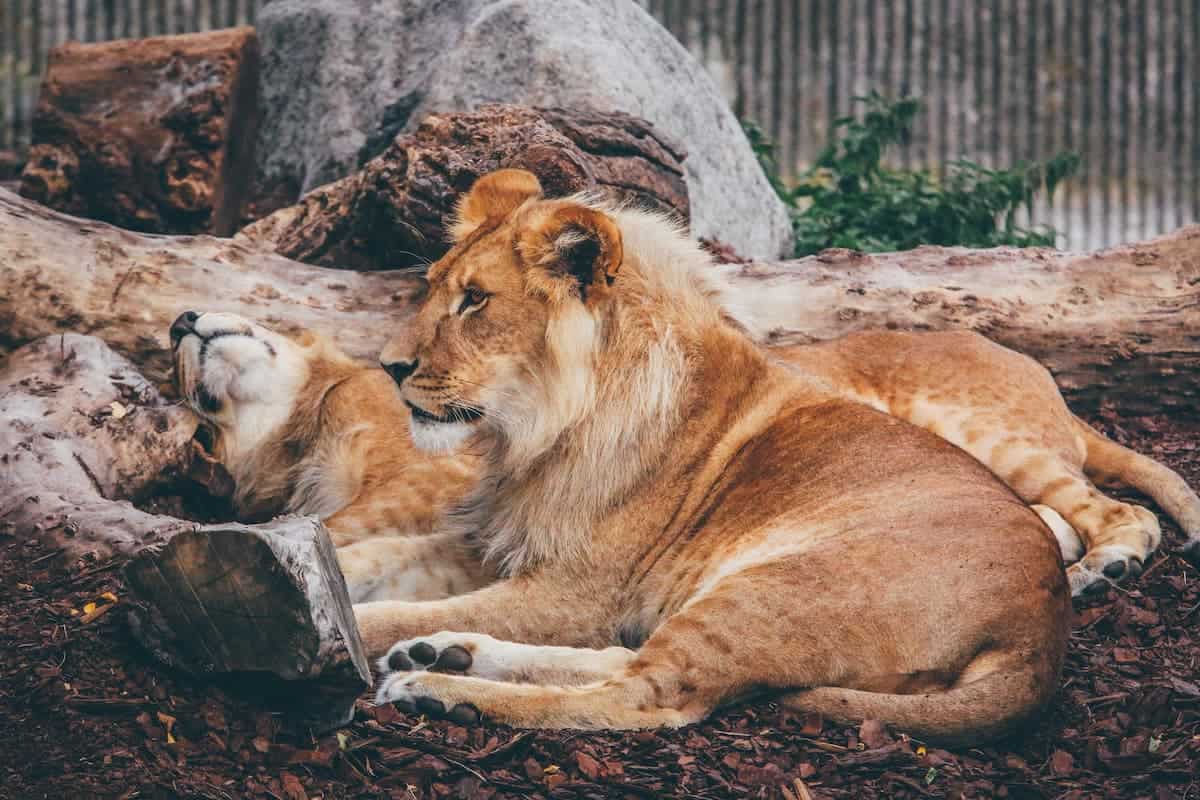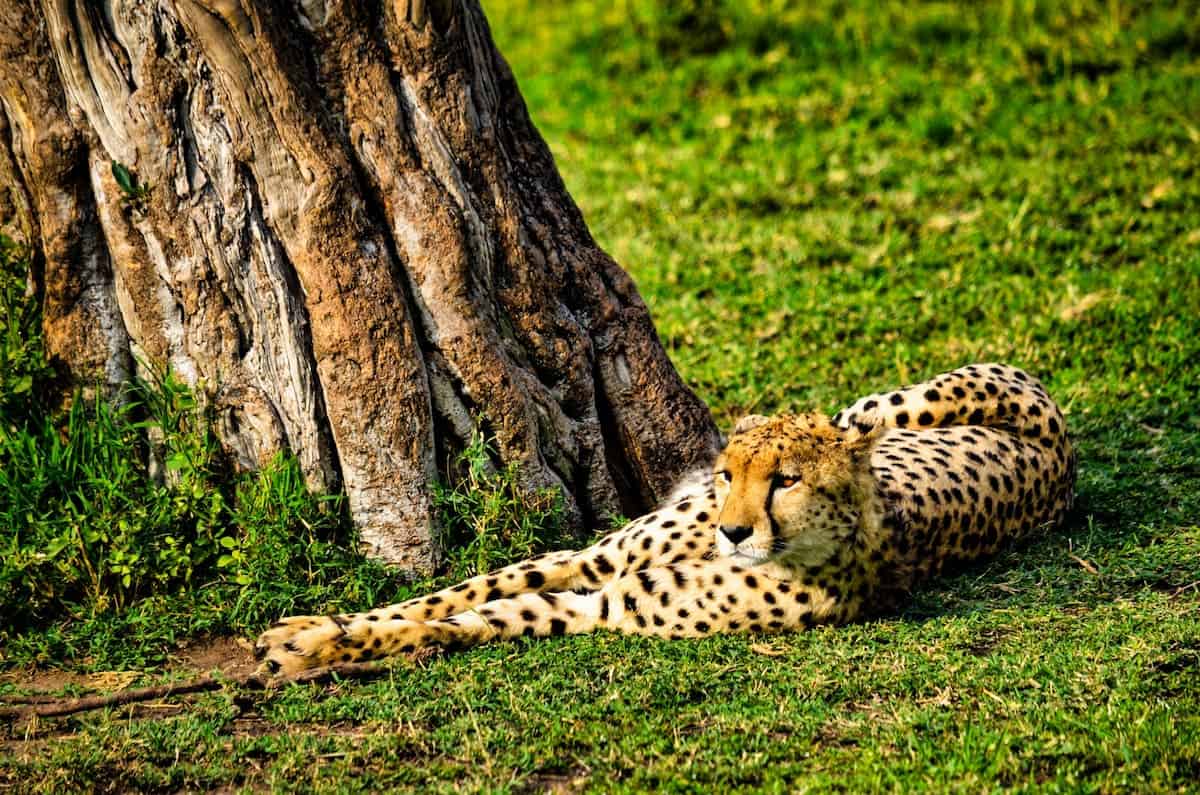Many of us are familiar with leopards lazily napping in a tree’s branches, but what about lions? Does the “king of the jungle” climb up and sleep in a tree? Although you might rarely find a lion sleeping in a tree, this is not their normal behavior. Some lions are more inclined to adopt an arboreal lifestyle due to certain environmental factors and learned behaviors. The article below examines why lions do not frequently sleep in trees when they do sleep in trees and other related factors.
Understanding The Relationship Between Lions And Trees
Trees are a fundamental part of a lion’s natural habitat. The title “king of the jungle” is a bit misleading. Most lions live in savannahs, which are mixed grassland and some trees.
Most animals sleep during the midday hours to avoid overheating because Africa is a hot place. Although lions do not necessarily sleep in trees, their shade is essential for lions to escape the midday heat.
Although lions can climb trees, they do not always have the aptitude for it (they are not very good at it), and lions do not climb trees as often.
However, lions sleep in trees in several situations.
Why Lions Usually Do Not Sleep In Trees
Lions do not sleep in trees because they do not have to. Lions are the largest cats and predators on the African plains. The only significant threats that lions experience are from other lions and large groups of hyenas, who might try to steal a kill.
Leopards climb trees to hide their prey from lions and other opportunists. Lions do not need to do this as they usually chase other predators away from their meals.
Lions are renowned as social animals, and a pride of lions usually sleeps on the ground in the shade of shrubs and trees. They are relatively safe from attacks while resting because of their pride. A pride usually has too many individuals to fit into a tree.
For most lions, climbing a tree provides no significant benefits; it is usually a greater “waste” of energy.
Lions are heavy-bodied cats, another reason for not regularly sleeping in trees. An adult lion weighs between 250 (females) and 400 pounds for the heavier males. Their greater weight means that some trees might not hold their weight, and they risk falling and injuring themselves.
A Lion’s weight also makes climbing down trees risky, as they might dislocate or break a bone upon landing.
Aside from their weight, lions’ bodies are adapted to wrestling large prey to the ground and lack the litheness of leopards. Lions’ muscles and ligaments are “stiffer” to deal with the energy required for catching animals as large as sub-adult elephants.
Why Do Lions Sometimes Sleep In Trees?
Although lions do not traditionally sleep in trees, there are several instances where you will be lucky enough to find them snoozing in one.
Sleeping in a tree provides several benefits, including:
- Lions are at rest during the heat of the day. A tree is high above the scorching ground and helps cool the perched cats off. The tree-sleeping lions benefit more if there is a breeze than ground dwellers.
- Lions have a great vantage point when sleeping up a tree. Potential threats cannot sneak up on you if you are up a tree, and keeping a lazy eye on your next meal is another benefit while up a tree.
- Lions avoid unwanted encounters with other dangerous animals and lions while sleeping in a tree.
Situations Where Lions Sleep In Trees
Lions occasionally elect to sleep in a tree (although not usually their first choice) due to particular circumstances. Some of these situations include:
When Shade Is A Limiting Factor
Lions climb trees to fully use what shade is available when said shade is limited.
A UK Daily Mail article from 2015 has an interesting story about a pride of lions taking an afternoon nap in a sausage tree. In the African summer, the temperature reaches 32°C (89.6°F) by 8 am.
Most animals are too hot and bothered by the middle of the day to do anything other than sleep in the shade. Sometimes lions must become creative to escape the sun, especially when finding shade is difficult.
To Avoid Insects And Other Ground Parasites
Lions, like most of us, prefer to be comfortable when they sleep. However, ticks, ants, tsetse flies, and other biting insects are unpleasant and disturb sleeping animals. If a lion has the option to escape these horrible biting insects by climbing a tree, it will not hesitate to do so.
A lion continues its nap once up a tree.
Young Lions Climb Trees
Juveniles of most species are adventurous, and exploring a nearby tree is right up the alley of curious cubs. Cubs are usually lightweight enough that the tree supports them, and climbing down poses less risk, which is an added advantage.
Cubs nap in a tree after a round of romping with siblings and other pride mates.
When Elephants, Rhino, Or Buffalo Are In The Area
The lion might be the “king of the jungle,” but he stands little chance against the true “superpower.” A pride of lions does not fear much, but elephants, rhinos, and buffalo are strong contenders.
These larger herbivores often exhibit aggressive behavior towards lions, especially when there are young nearby. Lions may seek refuge in a tree to avoid conflict with these grumpy ungulates and better keep an eye on their movements.
Are There Specific Lion Prides That Sleep In Trees?
Tourists and safari guides observed this tree climbing affinity in two East African areas (although comparatively few lions sleep in trees).
- Queen Elizabeth National Park is located in Ishasha, Western Uganda.
- Tarangire National Park and Lake Manyara National Park, in Southern Tanzania.
Tourists and safari guides noticed lions sleeping in trees in Kruger National Park in South Africa, On rarer occasions.
Most lions are not competent in tree climbing; however, these show a greater aptitude, which they pass on to their offspring as a learned behavior (tree climbing becomes a tradition).
What Trees Do Lions Sleep In?
Lions are far less adept at climbing than leopards. They usually select easy-to-climb trees that have lower hanging branches that make clambering up (and down) the tree easier. The tree and its branches must be strong enough to support a lion’s weight and thick enough to afford the lion a “comfortable” sleeping spot.
Some trees that meet the criteria include:
- Sausage trees
- Acacias (thorn trees), particularly the umbrella thorn tree
- African Sycamore Fig trees
Conclusion
A lion could climb into a tree to sleep, provided it is the correct type of tree and the lion has enough practice. However, the pros of sleeping in the tree need to outweigh the risk of injury. For most lions, tree climbing is a rarely practiced art, and sleeping in trees is less frequent. However, some prides have adapted to use trees to escape the heat, annoying insects, and potential threats while enjoying their midday rest.





